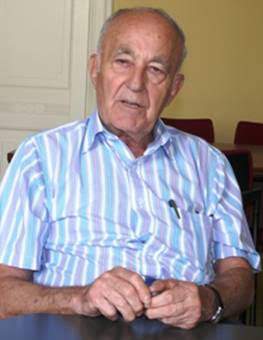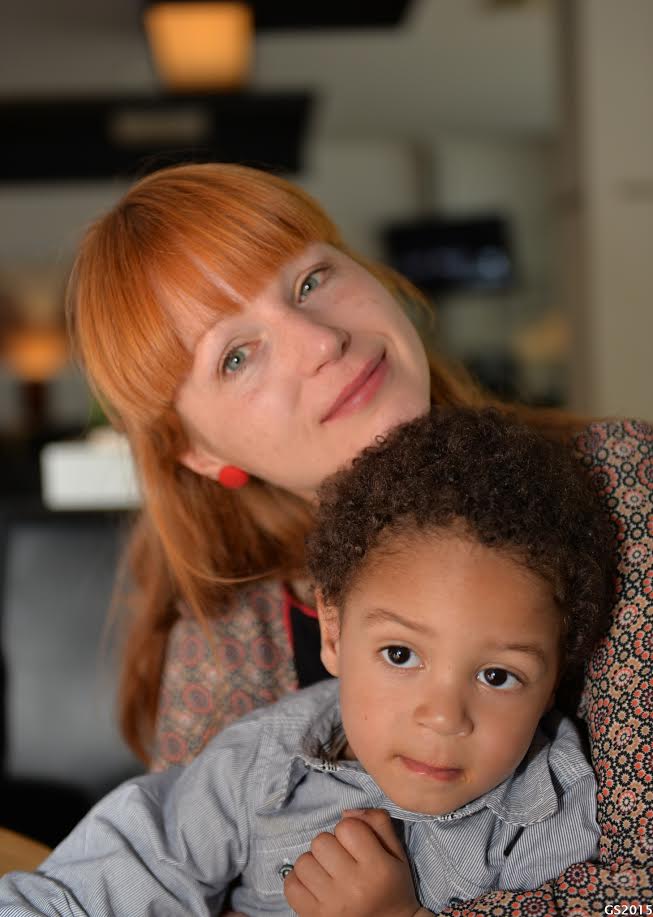
THE VOICE OF INTERNATIONAL LITHUANIA
|
VilNews has its own Google archive! Type a word in the above search box to find any article.
You can also follow us on Facebook. We have two different pages. Click to open and join.
|
Author Archive
![]()
|
EUROPE’S LONGEST AND
BLOODIEST GUERILLA WAR LITHUANIA, LATVIA & ESTONIA 1944 - 1953
Lithuanian ‘forest brothers’ from the so-called "Vytis" military district. |
EUROPE’S LONGEST AND BLOODIEST
GUERILLA WAR IN MODERN TIMES
THE BALTIC STATES 1944 – 1953
Text: Aage Myhre
Pictures: Mostly from the KGB Museum in Vilnius
Tell a Lithuanian that it was today, the 9th of May 1945, that his country was liberated and peace after WWII restored. Tell him that this 2010 May it is 65 years since the Soviet Union and the Western world defeated Hitler's Nazi regime, and that Lithuania since then has been a free, happy country in line with what other European countries experienced after they were occupied in 1939 –1940 and liberated in 1945. Do not be surprised if you get an angry and annoyed look back. For while we in the Western world, in Russia and in other parts of the world joyfully could celebrate the liberation and the recovered freedom after the World War, Lithuania, the other two Baltic states, and Ukraine were forced to realize that one war had been replaced by a new, much bloodier and more protracted war, lasting from 1944 to at least 1953. What we in the west celebrated in May 1945 was by Lithuanians and the other occupied countries experienced only in 1990 –1991.

The end of World War II saw Germany dramatically reduced in size. Before long
it was also divided into East and West. Germany's defeat meant that Poland
and Czechoslovakia returned to the map of Europe after a six-year absence.
But not so for Estonia, Latvia, Lithuania, Ukraine and northern East Prussia
(Kaliningrad) that all remained occupied by the USSR.
Western radio stations told us, who were lucky enough to grow up on the western side of the iron curtain, thoroughly about the Hungarian uprising against the Soviet intervention in 1956, an uprising that resulted in 2,500 Hungarians and 700 Soviet soldiers losing their lives.
Western television stations showed us in detail what happened when Czechoslovakia was invaded in 1968 by more than 200,000 troops from the Warsaw Pact countries Soviet Union, Poland, East Germany, Hungary and Bulgaria - with the outcome that 72 Czechs and Slovaks were killed when they tried to resist.
However, we got almost nothing to know about the many, many times bloodier uprising against the Soviet that was happening right outside our own front door, in the Baltic States, through nine long years from 1944 to 1953.
It is estimated that approximately 30,000 Balts and 100,000 Soviet soldiers died in this bloody guerrilla war when Estonians, Latvians and Lithuanians withdrew into the woods to organize its powerful armed partisan resistance after the Soviet Union at the end of the second World War, in 1944, pushed the German forces out, and Stalin decided to incorporate the Baltic States into his powerful autocracy instead of giving these countries their freedom and independence back. Today we know that this tragic, involuntary occupation and oppression was to last the whole 47 years, from 1944 to 1991.

Entering a Siberian Gulag (leaf from Eufrosinia Kersnovskaya's notebook). During the period 1940 – 1953
Stalin’s Soviet deported approximately 600,000 individuals from the Baltic States to Siberia.
Around 100,000 of them never returned to their homelands.
In addition to the 30,000 Balts who died in direct combats with the Red Army during this nine-year guerrilla war, comes all those who died in or on their way to Siberia, all because of their resistance to the Soviet raids home in the Baltics. It is considered that Josef Stalin was responsible for the deportation of not less than 600,000 Baltic people to the permafrost concentration camps and the gulag prisons during these years, and that probably as many as 100,000 of them died during the stay or during the three-month journey where they were stuffed into icy cold, miserable cattle wagons with thin straw mats as mattresses, and very limited food rations to survive on during the long way to the cold hell, thousands of kilometres north and east.
We speak, in other words, about an almost unimaginable and too little known purges of totally 130,000 people from the Baltic States during the very first years after the Second World War. But let us not forget that also the approximately 100,000 Soviet soldiers who died were victims of the same madness that almost a quarter million people were exposed to by an inhuman despot, still by many is regarded as a hero in Russia, Georgia and other former Soviet republics. The despot Adolf Hitler almost pales in comparison.
In comparison, 58,000 Americans died during the Vietnam War in the years 1960-75, and we were all fed with regular updates on how the war evolved, almost minute by minute.
The distance between the free, western country of Sweden and Lithuania is less than 300 kilometres, shorter than the distance between Vilnius and Klaipeda. But despite the short distance, there was remarkable little information that reached the West about the tragic carnage that took place so close to our own front doors after the war.
We probably had enough to lick our wounds after five years of occupation and the World War II. Even today there are very few people who know much about the bloody Baltic guerrilla war. This is, for example all my Norwegian Encyclopaedia gives of information: "The armed resistance against the Soviet regime took the form of guerrilla groups in the forests (forest brothers) and had a large scope. Only in 1953 the armed resistance ebbed out."

Lithuania’s WWII: Torn apart by two super powers.

Many of the partisans were young men returning to Lithuania from the West after WWII to fight for their beloved home country. Here are three of them, with their official and nick names: K. Sirvys - "Sakalas", J. Luksa - "Skirmantas", B. Trumpys - "Rytis". Very few ‘Western partisans’ returned to the West. Almost all of them were killed by the Soviets.
Partisans, or "forest brothers" as they called themselves, were found in all three Baltic countries, but it was in Lithuania that the major groupings were found. It was also here that the really huge death tolls came. It is considered that 22,000 partisans and 70,000 soldiers from the Red Army and NKVD were killed in Lithuania alone, this in addition to the approximately 60,000 Lithuanians who died in Siberia during the early post war years.
The Lithuanian partisans usually appeared in uniforms, with national insignias and identification of rank as like other nations' armies. It is said that the Lithuanian soldiers always saved the last bullet for themselves; they knew all too well that torture, a symbolic trial and execution by hanging, head shot or group execution awaited them if they were captured.
The post war Guerrilla War in Lithuania is normally divided into three different phases:
- The first phase lasted from July 1944 to May 1946, with violent skirmishes and casualties on both sides. More than 10,000 forest brothers lost their lives in battles and skirmishes during these two years. Partisans captured during this period small towns from the Soviet forces, local quisling units were disarmed and the occupants’ offices were destroyed. But the big losses meant that tactics had to be changed.
- The second phase lasted from May 1946 until November 1948. The Lithuanian units were then divided into smaller groups that hid in well-camouflaged bunkers. During this period a joint command was established for all Lithuanian forces fighting against the occupying army. Contacts were also made contacts with the West in this period, but no help arrived.
- The final phase lasted until May 1953. And despite the brutal oppression and forced collectivization, around 2,000 partisans were still active with their armed resistance against the occupation. During this period, they also worked extensively with informing the Lithuanian people by publishing newspapers, books and leaflets. Circulation varied from a few hundred to 5,000. Such publications lasted until 1959.
There were also parallel battles against Soviet forces in Estonia and in Latvia, but in much smaller scale. Only in Western Ukraine, there was fighting in the same scale as in Lithuania.

The Forest Brothers often used cellars, tunnels or more complex
underground bunkers as their hideouts, such as the one depicted here.
The Baltic Partisan War came mostly to an end by May 1953, two months after Joseph Stalin died. But the last active resistance man in Lithuania shot himself, rather than surrender, as late as 1965, and the last partisan did not come out from his hiding place before 1986, 42 years after the guerrilla war in the Baltics started.
In 1955, the Soviet-controlled 'Radio Vilnius’ offered amnesty to all the partisans who were still hiding in Lithuania's deep forests, and in 1956 the KGB repeated a similar provision. Such amnesty-deals were of course meant only to lure the last forest brothers, so when the famous partisan leader 'Hawk' was taken that the same year, he was immediately given a symbolic trial and executed. Hawk was an American-born Lithuanian who had returned to his home country to fight the Soviet occupation.
Instead of giving themselves over to the Soviet occupiers, many chose to commit suicide, often by exploding a grenade right in their own faces in order to destroy them so much that they would not be identifiable and thereby create a risk to their relatives' lives. Such suicides occurred until around 1960. Many also managed to obtain false identity and get back into society without being detected.
Many of the Soviet Union's atrocities against the Baltic States have only come to light in earnest after 1991 when these countries regained their freedom and independence. A large part of the archives that mentioned the said matters were, however, brought to Moscow to prevent the World from having access to these highly revealing documents.
But, strangely, in 1994 a former KGB officer decided to go to the Lithuanian authorities with detailed information about how torture and executions had taken place at the KGB headquarters in the Vilnius city centre. He told that there had been secret burials for the victims, just on the outskirts of Vilnius. When the huge mass grave he had told about was found and opened, several hundred corpses of partisans were discovered, all in Lithuanian uniforms, and all obviously tortured to death.
One can ask whether it was a fatal mistake for a small country like Lithuania to so aggressively a predominance they had to understand they would not be able to defeat. Admittedly, there is a general perception that Lithuania thereby was avoiding most of the ‘russification’ that Stalin and later leaders implemented in all other Soviet republics. The Russians were simply too afraid of the Lithuanians as a result of the strong opposition during the post-war years, hence the proportion of Russians in Lithuania today represents only 6% of the population, compared to more than 30% in Latvia and around 25% in Estonia.
But the bloodshed in the Baltics, and the incredibly extensive deportations to Siberia, as a result of the partisan opposition, made that these three countries lost too many of their best men and women. The hero status they may have achieved around the world never became significantly large. We in the West did not know what really happened, and when we finally learned, far too many decades have passed to achieve a proper attention for the heroes, the very guerrilla war, the deportations and the unbelievable sufferings the Baltic people underwent on the Siberian permafrost during the 1940s and 1950s.
Lithuania, Latvia and Estonia have paid an extremely high price for their rebellion behaviours, and are unlikely ever to receive the honour and the redress they deserve for their courage to fight the injustice they were subjected to during the ruthless Soviet period.
When World War II ended, the West chose to forget Lithuania

The historic meeting near the end of World War II, the Yalta Conference, became fatal for Lithuania.
It involved three key allied leaders. Left to right: Winston Churchill, Prime Minister of the United Kingdom;
Franklin D. Roosevelt, President of the United States; and Joseph Stalin, Premier of the Soviet Union.
For several years after World War the Balts believed that the U.S. and other Allied powers would come to their rescue and help to free them from the Soviet occupation. This was fatal.
The partisan leaders were familiar with the Atlantic Charter, which was signed by Churchill and Roosevelt 12 August 1941 aboard the U.S. cruiser Augusta in Newfoundland, a charter later acceded to on 1 January 1942 by all countries involved in the war against Germany and Japan - including the Soviet Union. This declaration stated that all territorial changes resulting from the war would only take place after the population's own desires, and that any people should have the right freely to choose their form of government.
What the Baltic people did not know, was that their case head was not at all discussed when the British Prime Minister, Winston Churchill, the U.S. President Franklin D. Roosevelt and the Soviet leader Josef Stalin in February 1945 met in the city of Yalta on the Black Sea to lay the conditions for peace and the post-war period. The Baltic States were totally forgotten; but they did not know about it, and therefore continued the impossible fight against the evil superior force until 1953.
It has been speculated that Roosevelt's failing health may have been the reason why Stalin so easily got the upper hand at the Yalta Conference. The outcome was, in any case, very tragic for the Baltic States, and only in 2005 the American president, George W. Bush came here to apologise on behalf of the United States. Russia’s President, Vladimir Putin, was also asked to apologise for the atrocities against the Baltic States in the years after Yalta. But Russia still considers that they 'liberated' the Baltics and sees no reason to excuse themselves. It went even so far that Putin declared Lithuania's President Valdas Adamkus 'persona non grata' after the latter refused to come to Moscow to participate in Russia’s anniversary celebration of the Soviet victory over Nazi Germany on 9 May 2005.
In the years after WWII a number of Lithuanian agents were amazingly capable of getting in and out of the country several times, and in December 1947 a full delegation travelled to Western Europe to present their case to the Pope and to Western governments. But no countries or leaders dared go into conflict with Stalin's Soviet Union, and Lithuanians call for help was largely met with deaf ears.
Though not quite. Both U.S. and UK intelligence agencies gave their orders to see what might be done to create secret anti-communist organizations and operations behind the Iron Curtain. They also helped to organise the radio stations 'Radio Liberty' and 'Radio Free Europe', which for many years thereafter conveyed useful information to the Baltics. In 1951 came the 'Voice of America' on air, and thus gave hundreds of thousands of Baltic war refugees in the United States a voice back to their home countries at the Baltic Sea.
Unfortunately, the success of the Western intelligence services and their 'relief efforts' very much failed, which in retrospect largely is attributed to the British intelligence officer Kim Philby, the man who in reality was a Soviet spy who unfortunately contributed so actively to the killing of tens of thousands of Baltic people.
The intelligence organizations' attempts to help the Baltic States irritated Stalin violently, and he therefore imposed increasingly tough measures against the uprisings. His NKVD (later renamed the KGB) had more or less free hands to exercise extensive torture against individuals and groups believed being in league with the partisans. Vague suspicions were enough to allow use of cruel torture methods. Many were hanged or shot without any real form of litigation. A huge number of relatives and family members of the partisans were sent to slave labour camps in Siberia. All private farms were incorporated into collective farms to prevent them from continuing to provide food to the partisans, and many farmers were deported to Siberia. The West's attempts to help got quite the reverse effect. Tyranny had triumphed, and our close neighbours on the Baltic Sea's south coast were once again suffering in a most cruel way.

One of the many killed Lithuanian partisans, Juozas Luksa –
"Skirmantas", "Daumantas", after his death on the 4th of September 1951.
Photo: KGB
Few in the West know that Lithuania 500 years ago was considered Europe's largest country, stretching from the Baltic to the Black Sea. Few in our today's West know the proud and honourable cultural history of the Baltic countries, or that these countries were economically fully on par with Scandinavia until World War II, and few know about the heroic guerrilla war these three nations fought against the mighty Soviet Union after WWII.
During five world war years, the Baltic area became the incredibly bloody and sad battlefield where Stalin and Hitler pushed each other back and forth, with fatal and almost incomprehensible destruction and murders of hundreds of thousands innocent people as result. It was here that the Holocaust saw its very worst outcome on Earth, when 95% of the large Jewish population of Lithuania was exterminated. It was here that Europe's longest and bloodiest guerrilla war and the ensuing mass deportations to Siberia took place through more than a decade during and after WWII.
Hundreds of thousands of our closest neighbours died just outside our own front door (or were deported to the gulag camps in the permafrost of Siberia). These terrible things happened only 300 kilometres away from Lithuania’s closest Western coast, at the same time as we westerners celebrated our new freedom and the beginning of the new era we today know as the proud Western World.
Didn’t we know, or did we prefer not to know?
- Bookmark :
- Digg
- del.icio.us
- Stumbleupon
- Redit it
Text: Jeff Lewis & Arturas Bakanauskas
|
|
|
LEFT: Jeff Lewis and Rasa Mekuskaite studying one of Arturas’ African snails at a Vilnius cafe table.
RIGHT: Arturas Bakanauskas, the American-Lithuanian who breeds African snails in his bathroom.
Your dream has come true; after years of hard work and struggle, you have become one of the leading members of your profession, earning big fees. And then you receive an offer you cannot refuse: to work as an independent consultant abroad. The deadlines are loose, there is plenty of free time; travel is part of the package, and you are your own boss. You will be working in the rarefied air of executives, CEOs, managers, etc., who all speak English, so learning a foreign language is not a requirement. What's not to like?
Well, the image of the ugly American is of an outsider who comes into a situation ignorant of the local methods and customs, but who goes around telling everyone what they are doing wrong and gets angry when they fail to do so. But as an independent consultant, that is precisely your job description: telling people how to do their job. Furthermore, a low fee will mean your clients may well fail to respect you, but a high fee means they definitely expect results.
At home, you knew all the variables inside out. Here, things are done differently, and while the current system mostly seems to work for them, they would not have hired you if they did not perceive a need to change. Furthermore, they speak a distantly related language which seems to have little in common with English, no matter what expert linguists appear to say. Thus there is no way to get to the bottom of the situation so you can provide truly effective recommendations.
This is exactly the situation Jeff Lewis, a Welshman, found himself two and a half years ago when he moved to Lithuania. Jeff, a well-qualified business development consultant who had successfully resolved the unemployment problem in several UK communities, was invited to repeat his successes in the Baltics, Poland, and Slovakia.
While driving through Poland to Lithuania during heavy rains in April 2008, a lorry slammed into Jeff’s car, sending it into the central barrier. The car was totalled, most of his personal and business possessions lost, and his collarbone fractured. When he called his colleague in Klaipeda, Antanas Bucys, to report that he was seriously considering cancelling his plans, Antanas's answer changed everything: ‘Jeff, my sodyba (home) is your sodyba, my jeep your jeep’. This hospitality not only convinced him to continue his journey, but to take up permanent residence in Lithuania.
|
|
“Antanas's answer changed everything: ‘Jeff, my sodyba (home) is your sodyba, my jeep your jeep’. This hospitality not only convinced him to continue his journey, but to take up permanent residence in Lithuania.”
|
The fruit of this collaboration in Klaipeda was the award-winning ethnographic farmstead, Sena Troba (www.senatroba.lt). Jeff helped the village of Lapiai to implement rural development projects, contributed six basketballs to the school’s special needs programme, and helped to develop a ‘Families at Risk’ strategy. He also donated a copy of the 2008 Encyclopaedia Britannica on DVD to his project’s Klaipeda education representatives. Whilst living and working in Klaipeda Jeff accepted the opportunity in September 2008 to take a trade mission to Amsterdam and Copenhagen to promote the Regions design, fashion and manufacturing facilities.
This success drew Jeff to Kaunas, where he helped to develop a business education partnership between the UK textile manufacturing company, Camira Fabrics Ltd, which has a manufacturing facility, Camira Fabrics, UAB in Ariogala (Lithuania), and the Kauno taikomosios dailės mokykla (Kaunas Applied Art School, http://www.tdm.kaunas.lm.lt/) and the Kaunas Division of Valakupiai Rehabilitation Centre (VRC, www.reabilitacija.lt). The hope is that Camira Fabrics, UAB will provide work experience and possibly employment opportunities for hearing impaired students and disabled VRC candidates. Camira UAB already donates surplus materials to the school while Jeff, in line with his commitment to social corporate responsibility, donated a 16-volume Encyclopaedia Britannica Science Library, now supplemented by a copy of the complete 2011 Encyclopaedia Britannica on DVD, to it.
This success led to his moving to Vilnius and its myriad opportunities. And so he ended up at a Friday evening meeting between a young man representing Lithuanians all across Canada and a local organisation trying to promote Lithuania and Lithuanians in the world. Opposite him at the table sat an unusual individual, Arturas Bakanauskas. Arturas was neither a well-dressed successful businessman nor a member of the media, but a experienced researcher and translator invited to attend in order to offer whatever insights he could. Although born in the US, he identifies with Lithuania and conversed with the waitress freely in Lithuanian. Arturas made several suggestions in the course of the evening, but there was little chance to talk until the walk home when they realised they both lived in the same direction, and had a lot more in common.
A couple of weeks later they were invited to join the same desk at VilNews and so started weekly planning meetings where they got to know each other much better. For example, it turned out that they both have exactly the same first and middle names: Jeffrey Arthur, the first time either had encountered such a person. Although they are worlds apart in respect to experience, it is very complimentary, just like their names.
|
|
“Opposite him at the table sat an unusual individual, Arturas Bakanauskas. Arturas was neither a well-dressed successful businessman nor a member of the media, but an experienced researcher and translator invited to attend in order to offer whatever insights he could. Although born in the US, he identifies with Lithuania and conversed with the waitress freely in Lithuanian.”
|
Jeff has the business experience and the ear of people able to act on his recommendations, Arturas’s knowledge of the local situation that allows Jeff to make more relevant proposals and recommendations in such areas as rural development, vocational education, forestry, ecological foods, ethnographic arts, and international competition, e.g. the mixed choir 'Gabija’ of Vilnius Gediminas Technical University in 2008 took fourth place, the highest result among the European choirs, in the 62nd International Music competition ‘EISTEDDFOD 2008‘ in Llangollen (North Wales). Jeff remembers this well as whilst attending the Eisteddfod he met Terry Waite CBE and discussed ethnic community developments. This was with the help of Lithuania’s Honorary Consul to Wales, Anthony Packer. This collaboration is contributing to the formulation of travel and tourism strategies such as for hosting of Klaipeda cruise ship passengers, promoting Lithuanian music festivals, etc.
A discussion at a recent Novotel Lithuanian brunch between the French Ambassador and Jeff on the subject of the success of the French rugby team and sports in general led to the idea of founding a sports division of the Vilnius International Club that would arrange the public showing of such international sports events as the Euroleague and European Cup basketball games, Lithuania’s national pastime, (in association with Darius Laskys, the well known national basketball supporter, coach, and senior player), football matches, which are gaining in popularity in Lithuania, the Six Nations Rugby Tournament, the World Rugby Cup later this year, and the 2012 London Olympics. The Shakespeare Hotel currently hopes to host it. These events will not only contribute the excitement of a crowd, but also be a great opportunity to network with other fans, to see games not widely available in Lithuanian homes, to learn about other sports, and raise money for charity.
- Bookmark :
- Digg
- del.icio.us
- Stumbleupon
- Redit it
- Posted by - (4) Comment
2004 - 2010 in Lithuania
What Has Changed?
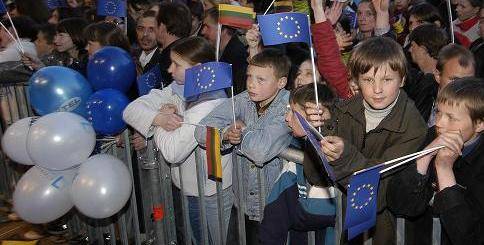
Text: KR Slade
Lithuania joined NATO in March of 2004, and the European Union in May of 2004. In May of 2006, Lithuania was not successful in joining the Euro Zone (i.e., the euro currency group); inflation was too high. The Lithuanian currency, the litas, remains pegged to the euro; the fixed-rated is unlikely to change because Lithuanian debts are tied to the euro (i.e., if the litas were devaluated, the debts would be greater).
In 2009, after much denial at all levels of government and politics for more than a year, a parliamentary investigatory committee confirmed that Lithuania had two secret prisons (during the period from September 2004 to November 2005) for the ‘extraordinary rendition’ of the USA ‘war on terror’. However, there was no proof that the prisons had actually ever been used. The president of Lithuania at the time of the existence of the prisons said that he had no knowledge of the prisons and that their existence had not been proven to him.
In the last six years, there have been 3 ½ Presidents of Lithuania. In the Spring of 2004, the President was impeached (on some vague grounds tantamount to ‘treason’); he insists that it was a coup organized by the USA from when he refused to allow any USA secret prison in Lithuania; he is now a member of the EU parliament; there was no sufficient evidence to convict him for his alleged crime of treason; in late 2010, the EU courts decreed that the Lithuanian parliament’s law banning him from elective office was illegal and void. There was a ‘temporary’ president, who was currently the speaker of the parliament (since Lithuania does not have a vice-president), for three months until there was a new election. The new president, a Lithuanian-born American (apparently not ethnic-Lithuanian) was re-elected (serving from February 1998 to February 2003 and July 2004 to July 2009). In the summer of 2009, there was a decisive mandate for Lithuania’s first women president, who has no party affiliation, and who remains the most popular politician in recent memory. The previous twenty years of relations with Russia are moving from being antagonistic, and beginning to become normalized.
As a condition of admission to the EU, December 2009 saw the closure of the last (of two) of Lithuania’s Soviet-era nuclear reactors for the production of electricity. The construction of a replacement reactor has still not yet been begun, albeit now 6 years of inaction. If ever commenced, the project will take at least a decade to complete.
Recent indications are that soon mandatory military service for males will be eliminated in favour of an all-volunteer military. There is not much discussion of the last decade regarding how easy and widespread was the avoidance of the military-service obligation.
The last population census in Lithuania took place in 2001: 3,484,000 persons were recorded. About a year ago, the population figure was suddenly acknowledged by ‘official’ estimates to be 3,200,000 persons. However, there remains a problem with ‘the math’. At the end of the Soviet era, the population was stated as 3.5 million. By 1994, when the last Russian troops left, there was an acknowledged population-drop of 10% (troops, their families, their support structure, and other ethnic/linguistic Russians). The birth rate has declined by 25% since Soviet times. Mortality rates continue to be high. There currently are 200,000+ known Lithuanians in London. There are large numbers of recently migrated Lithuanians in other parts of the UK, in Ireland, Spain, and other EU countries, as well as in South Africa, Israel, USA, Canada, South America, and Australia. Three years ago, the Supreme Court of Lithuania declared unconstitutional dual-citizenship; some people then left Lithuania and repatriations are fewer. About a year ago, immigration laws were changed to make more difficult the bringing of a spouse and children to Lithuania for individuals (usually men) who had work visa’s (usually for professional work); the number of temporary workers dropped (as did foreign investments). There is no fact that would indicate any contribution to any possible increase in the population since 2001. In summary: the total of the minuses are more than 300,000 acknowledged reduction; far more; probably at least twice more. In conclusion, the true population is likely to be less than 3 million, perhaps about 2.6 to 2.85 million. [Note: there is a new population census scheduled to be completed on 1 May 2011.]
During the last two years, the Lithuanian economy shrunk at the huge amount of 15 percent; the consolation is that this is not as bad as next-door-neighbour Latvia, which had the world’s greatest decrease at 18 percent. The analyses by government and the banking sector foresee ‘improvement’, because the rate of decrease is slowing. Of course the rate of decrease is slowing; if the rate were not slowing, then in a half-dozen years there would be Zero economy !! The ‘good news’ is that maybe there will be ‘some’ (true) growth, maybe a-fraction-of-one-percent, this year. QUESTION: how many years will it take, at the rate of a-fraction-of-one-percent per year, to return the lost original amount ? Statistically, that time period is beyond the life expectancy of most of the people now living.
From my observations
(some topics not so often discussed; this is how life really is) . . .
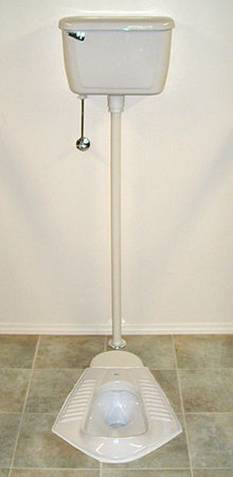
There is the anecdote of the politician visiting the countryside to promote acceptance of Lithuania becoming a member of the European Union. After his speech, he accepted questions. As is typical in Lithuania, there were no questions. Finally, from the back of the room, some farmer asked, “If everyone is going to make more money, then won’t prices for everything go up?” Everyone laughed; everyone knew that the old farmer had never gone to school, was poor, and was very-very stupid.
Bus/trolley intra-city transportation fares have increased by a factor of 4x; service has been reduced by about one-quarter. There has been an increase of 3x for the price of a cup of coffee or tea, as well as anything else available in a restaurant; and most offerings are new (not ‘traditional’) items, and cost 5x the amount of what was formerly a meal. In stores, prices have increased 3x for food, beer, and alcohol. Cigarettes are increased by 4x; in February 2011 there was a further increase of about 9 percent. Electricity and heating and gas costs have tripled. There is less restaurant and bar business because smoking is no longer allowed per EU requirements.
Many churches that were once open all day are now open only a couple of hours per day. Libraries are no longer open on Saturdays (or Sundays); weekday hours begin later and end earlier. Most of the national library is closed for more than two years, due to structural damage from nearby construction.
The costs have doubled for attendance at post-secondary schools (colleges, universities, and ‘higher schools’). In universities, there are now varying costs -- depending on the course selection.
Perhaps one-half of the above price increases occurred prior to the 2008 world economic crisis. In 2009, the VAT (‘value-added tax’; similar to a sales tax; on both goods and services) was increased from 18 percent to 21 percent.
Banks have initiated ‘service charges’ for their customers to get access to the customers own funds. People cannot pay their bills directly and/or in cash for their rent, insurance, electricity, heat, home gas, school fees, etc. All of these expenses may be paid via Internet, but with a service charge to the bank; otherwise, it is necessary to go to a bank or post office or some retail store to pay the bill, and to pay a ‘service charge’ to the point of payment.
Buildings are still being built with toilets that are ‘holes in the floor’; adding audacious to infamous, there may be a charge of one (1) litas to use it ! The term: ‘squat toilet’ may be unfamiliar to most Westerners, except for possible memories of ‘latrines’ (e.g., Boy Scouting days, or military service). Unfortunately, the squat-toilet is still very much in use in Lithuania. These devices are found in many public buildings (transportation terminals, shopping centres, schools, restaurants, bars, etc.), as well as in renovations and new construction. The proponents advance their arguments of ‘optimum human anatomical function’ and lowered disease contagion due to absence of bodily contact. This ignores the fact that the installation is impossible to maintain sanitation, handicapped persons use, and Western values/opinion. Moreover, there are related ‘toilet issues’ regarding the use of toilet-seats as an ‘optional luxury’, as well as the common fact of toilets that do not function to accept any paper -- leaving the spent paper to accumulate in open receptacles. Lastly, the general rule is “bring your own paper” (i.e., none supplied).
There is an anecdote at a local university: “I think that we are having very important guest today.” “Maybe a politician, or even a minister?” “No; more important; maybe a foreign prime minister, or head of state. The lavatory has soap to wash your hands, paper to wipe your hands, and even toilet paper.”
Abandoned construction projects are not uncommon. The landscape contains carcasses of abandoned projects -- typically hotels, large homes, or apartment buildings. Construction began on the ‘national soccer stadium’ in the Soviet era; in the last six years construction has re-commenced and stopped the same number of times. “It is not a big problem; the national sport of Lithuania is basketball, not soccer.” The monumental ‘Palace of the Rulers’ re-construction of the complex destroyed in Czarist times is now suspended for lack of 100 million litas needed for completion; after an original estimate a couple of years ago of a total cost of 100 million litas, later doubled, and still-later adding another 100 million litas for interior furnishings. “It is not a big problem; there was only one ruler who ever actually lived in the original palace anyway; Lithuania doesn’t need a Renaissance Disneyland.”
During the last few years, it has become very rare to hear about robberies of banks, jewellery stores, warehouses, etc.
Six years ago every newspaper carried stories of a half-dozen financial scandals on their front page. In the last year or so, a reader might see only one or two such stories a month.
In the last three years, there seem to be much less bribery of police. A new law provided that money would go to an arresting officer, from fines from convictions of attempted bribery; thus, the police officer gets more money by not taking the bribe and arresting the briber.
In the last six years almost every building has a publicly wall-posted diagram for exit / evacuations in the event of an emergency. However, most of those exits are locked. I have never seen a ‘crash-bar’ (‘panic-bar’) on any door anywhere in Lithuania.
Most, but not all, public buildings now have signs indicating exits. However, the signs are rarely illuminated. Most buildings do not have emergency lighting. On Wednesday, 7 February 2007, at about 6 p.m., I was in the ‘Europa’ shopping centre -- a high-end, multi-level, Vilnius mall that had been constructed three years previously; all of the lights (and escalators and elevators) went off; there were no emergency lights; there were no exit lights; there was no public-address announcement.
In the Old Town, there are many restaurants, bars, and clubs that serve clients in brick-vaulted windowless cellars. There is rarely a secondary exit; the only way out is the one way that everybody came in.
The fire-truck fleet seems to have been modernized and expanded. However, the fire trucks are designed to carry their own water supply; fire hydrants are rare. ‘Standpipes’ (high-capacity water sources inside of buildings, in the hallways) may exist, but there are never any fire hoses. Portable fire-extinguishers are usually not accessable, except by a key to their lock.
In the early post-Soviet times, there were no ‘supermarkets’ to buy food; although there were, and still are, large ‘markets’ (meaning ‘marketplaces’) of many individual vendors selling various kinds of food, etc. Six years ago, there were some individually-owned small food stores; these have all since disappeared, except in the villages. Interestingly, those little village stores, where the customer must ask the clerk for any product, because fear of theft did not permit ‘self-service’, do still exist; and, even in the cities, some pharmacies are still of that model. Today, there are three or four chains of food stores that operate various-size stores: from what might be considered a ‘corner store’, to medium, to large, and a few very-large stores -- usually located in shopping malls. However, even the largest store/mall in Lithuania would be only ‘large’ (not ‘very large’ or ‘huge’) by US/Canadian standards. Most food items found in an ‘average size’ food store in Canada/US can also be found in Lithuanian food stores. What is missing in the Lithuanian stores is the selection of sizes; it is not possible to buy a bar of body-soap larger than 100 grams.
I still get confused at the supermarket. Toilet paper must always be located immediately adjacent to paper towels; the wrapping always blocks the middle of the package, and the labelling is usually in Polish; this can be confusing when selecting, and disappointing after purchasing. (It took me six years to learn to squeeze the package in the centre vertically.) Facial tissue is at the other side of the store -- next to body soap, toothpaste, and feminine hygiene products. The price (in Lithuanian ‘litas’) of facial tissue is between .29 and .59 for a packet of ten, or 3.99 and 5.99 for a box of 100. Coffee might be 4.99 for 250 grams, and 11.99 for 500 grams. Laundry detergent must be for only white, or colour, or black; no laundry detergent will wash all colours. I cannot find toothpaste with fluoride. There is no salted butter, no dehydrated onion, no frozen TV dinners, no sauce Béarnaise, no brown gravy, and (most sadly to me) no Kraft macaroni-and-cheese. To find Coca-Cola in cans, rather than plastic bottles, is rare; I like two cans a month; I do not like the taste from bottles. There is no canned soup; “no one buys soup, everyone makes soup”. There is no sliced roast-beef; ‘shaved’ sliced-meat is unknown in markets and restaurants (although there may be some smoked game-meat, and imported prosciutto ham). Hellman’s” mayonnaise is always in the refrigerated section; the Hellman’s high price promotes the cheap local versions that must always be refrigerated. There is a wide selection of smoked (i.e., not stove/oven cooked) dried sausage; at great variety of prices and appearances; I buy whatever the person next to me buys. There is something not available in Canada/US: ‘surelis’, which is ‘curd’ (like cottage cheese, but solid) of some dozen flavourings, covered with chocolate; about the size of a small “Milky-Way” candy bar; it must be kept refrigerated, or it could melt to goo.
On restaurant tables, now there are usually salt and pepper shakers; good-luck getting the salt out of the shaker: the salt is not iodized, the grains are larger, and the wet Lithuanian climate makes nigh-impossible using the shaker. On a restaurant table, to find ketchup would be rare. Occasionally there are napkins, always of the texture of tissue paper, which are absolutely useless.
About two years ago, the law changed governing the sales of alcohol in stores. Now, there are no more late-night, or 24-hour (‘always open’), stores selling booze. There are no retail-store sales of any alcohol after 10pm. The same law also prohibits store sales of any alcohol on the first weekday of September, because that is the day that all children (from kindergarten through university) return to school. I do not really understand the reasoning, given the result that this day has now become ‘Go to Bar Day’. Alcoholics often drink ‘surrogate alcohol’: cheap cleaning-solvents and perfumes. The capitol city has a high number of alcoholics, drug addicts (usually heroin), homeless, and psychiatric cases populating the streets and parks; this situation did not exist in Soviet times, and appears to be worsening recently. Suicide rates remain amongst the highest in the world. Abusive family instances are beginning to get some attention by the society-at-large.
One of the most visible improvements in day-to-day life is the reduction of randomly discarded refuse. Six years ago, there was trash thrown everywhere; the improvement was rather strange. Most of the refuse was empty beer containers: 1/4 litre glass bottles, 2 litre plastic bottles, and beer cans. First, a 25-cent refundable deposit was placed on the small glass re-useable bottles; returnable to most places of sales. More recently, a premium of 2 or 3 cents was given for the recyclable 2-litre bottles and aluminium cans; however, the locations for such returns are few-and-far-between. Making the beverage containers returnable did not, of itself, solve the refuse problem, because most people would not be bothered to carry the bottles/cans back to a store or to a refuse collection centre; and, perhaps some attached a social stigma to seeking a refund. Therefore, everyone continued to throw-away the bottles/cans. However, in the last couple of years, the large (and apparently increasing) number of destitute people has taken up the ‘job’ of collecting discarded glass/plastic bottles and aluminium cans; such beverage containers now have been eliminated from all public places.
Water often flows directly off buildings’ roofs (and balconies); usually, there are gutters to channel the roof water to downspouts. However, in either case, the vast majority of buildings (including the renovated and the newest) deposit the roof water to alongside the exterior of the building ! The result is: water in the basement, destruction of foundation walls, and water onto sidewalks and streets; and, ice-accumulation is increased, causing further problems. Sidewalks are usually paved with square concrete tile-blocks (about 14 inches / 32 cm), which due to the significant amount of water results in disturbing their supporting soil, causing further uneven (or collapsed) sidewalk pavement providing for increased collection water on sidewalks. Moreover, the streets are not arced, to direct any water to roadway-gutters, nor are the streets sloped to channel water to storm drains; moreover, there are always an insufficient number of storm drains. The lack of good design and infrastructure to control run-off water turns land into veritable swamps. And: it rains alot in LT !! Perhaps, engineering schools in Lithuania might benefit from a study of how the Romans (i.e., 2,000 years ago) controlled water runoffs.
Snow removal is most-often left to the one responsible for creating the snow: God. Very recently, there are now some snowploughing trucks that are beyond the old Soviet army-trucks fitted with ploughs. Still, there is no equipment or ‘systems’ of the sort found in Canada, or even in the USA; there is no sidewalk ploughing, no snow blowers; the method is still to use shovels (often home-made from a broom handle attached to a squared piece of metal or plywood) and brooms (made from the gathering of tree branches).
Similarly, grass-cutting is not ‘developed’. It is rare to see any tractors, or even riding lawnmowers. There is some use of gasoline-powered lawnmowers, but without collecting the cuttings, so hand raking is required thereafter. It is not unusual to see ‘weed-wackers’ being used to cut hectares / acres of grass.
Tap water has very-high levels of minerals, which cause problems with pipes, washing machines, hot-water heaters, water boilers, showerheads, faucets, valves, etc. There are the common announcements: ‘no water today’, or ‘no water this week’; the pipes and machinery periodically have to be cleaned of clogs.
In all cities, heat to all buildings is provided ‘centrally’, meaning from one or more huge thermal plants (gas or oil fired), with the hot water piped (underground) to each building throughout the municipality. Apparently, a ‘monopoly’ is allowed for this industry; moreover, residents or buildings are ‘restricted’ (or not allowed) to have their own individual heating system installed.
Colleges / universities are governed by their own faculty, in ‘senates’ -- which appoint ‘rectors’ (i.e., chief-operating officers) from their own faculty membership. There is no concept of governance by ‘trustees’ for not-for-profit organizations (which are called NGO’s -- ‘non-governmental organizations’). In the non-educational sectors of public institutions, the entire leadership of the institution is vested exclusively in a managing ‘director’ (head administrator), responsible only to the government (as in Soviet times). Thus, there is no private fund-raising; the institution is entirely governmentally supported; the institution is responsible to its workers (as in Soviet times; the ‘workers, collectively, effectively own the institution’) and/or the government, and not to its clients or to the taxpayers.
The intra-city public transportation system consists of trolley and bus vehicles. [There is also some quasi-legal mini-vans ‘companies’ operating ‘route taxi services’; both intra-city and inter-cities.] Perhaps some four years ago, the public transport system had route maps, inside of each vehicle and at each ‘stop’; these route maps lasted for about six months. Then, the maps were removed. However, no one could read the microscopic printing of the name of the streets on the maps, especially the maps printed as handouts. In 2010, a new system was instigated regarding how passengers enter the vehicle. Previously, everyone entered and exited from any of the three doors. Now, passengers must enter through only the front door, where their tickets can be checked (as well as their behaviour). This change to public transportation took more than fifty years. Two years ago, each bus/trolley was equipped with an electronic device to accept passenger tickets; these devices have never worked.
The economic situation of the last couple of years has had some very visible effects. Some street lighting has been turned-off. Crime is increasing, especially in rural areas. Office buildings have very-high vacancies. Many storefronts are empty. Bankruptcies have dramatically increased. Many houses, which began construction in last couple of years, are not completed, or are often vacant, or never have been occupied; there are areas of newer neighbourhoods that are ‘ghost streets’.
The concept of a public ‘classical debate’ is making appearance in Lithuania. On 30 November 2010, the ‘Vilnius International Club’ and ‘Mykolas Romeris University’ of Vilnius presented a debate, with distinguished speakers on both sides of the ‘motion’:
American Style Capitalism is at its collapse
in tandem with the collapse of Soviet style communism;
therefore the European Union must find other ways
to protect and promote enlightenment values
* * * * *
Conclusion
Regardless of any true/actual cause-effect relationship, people in Lithuania will tend to associate their present and coming lifestyle status with ‘democracy’ and the ‘free-market’ (a/k/a ‘capitalist’) system . . .
Since former-president, now Prime Minister Putin rose to power ten years ago, Russian officials have insisted that their country will develop its own political system: sometimes called "sovereign democracy", as opposed to “parliamentary democracy” -- which many Russians associate with ‘poverty’. Russia may have abandoned communism, but Russia wants its own form of ‘free market’ system, and its own form of ‘democracy’; not such American-style, or Western-European style, systems.
Lithuania, and its neighbours, will be influenced by the developing systems in Russia.
Note: a version of this article appeared in the October-November 2010 and January-February 2011 issues of the Canadian subscribers’ journal, ‘Dialogue’ magazine
*********************
During the last two years,
the economy shrunk the huge amount of 15%;
the consolation is that this is not as bad
as next-door Latvia
that had the world’s greatest decrease at 18%.
*********************
The analyses of government and the banking sector
see ‘improvement’ because the rate of decrease is slowing.
Of course the rate of decrease is slowing;
if the rate were not slowing,
then in a half-dozen years there would be Zero economy !!
*********************
The ‘good news’ is that maybe there will be some growth,
maybe a-fraction-of-one-percent, this year.
Now, how many years will it take,
at the rate of a-fraction-of-one-percent per year,
to return the lost original amount ?
Statistically, that time period is well-beyond my life expectancy.
**************************
There is the anecdote of the politician visiting the countryside
to promote acceptance of Lithuania becoming
a member of the European Union.
After his speech, he accepted questions.
As is typical in Lithuania, there were no questions.
Finally, from the back of the room, some old farmer asked,
“If everyone is going to make more money,
then won’t prices for everything go up?”
Everyone laughed; everyone knew that the old farmer
had never gone to school, was poor, and very very stupid.
**************************
There is an anecdote at a local university:
“I think that we are having very important visitor today.”
“Maybe a politician, or even a minister?”
“No; more important; maybe a foreign prime minister, or head of state.
The lavatory has soap to wash your hands, paper to wipe your hands,
and even toilet paper.”
*********************
... it is not possible to buy a bar of body-soap larger than 100 grams ...
*********************
The price (in Lithuanian ‘litas’) of facial tissue is between .29 and .49 for a packet of ten, or 3.99 and 4.99 for a box of 100. Coffee might be 4.99 for 250 grams, and 11.99 for 500 grams.
*********************
There is no canned soup; “no one buys soup, everyone makes soup”.
*********************
Snow removal is most-often left to the one responsible for creating the snow: God.
*********************
Russian officials have insisted that their country will develop its own political system: sometimes called "sovereign democracy", as opposed to “parliamentary democracy” -- which many Russians associate with ‘poverty’.
*********************
- Bookmark :
- Digg
- del.icio.us
- Stumbleupon
- Redit it
A Lithuanian Presidential Palace…
- Posted by - (0) Comment
A LITHUANIAN PRESIDENTIAL PALACE
|
||||||||||||||||||||||||||||||||||||||||||
|
It must have been quite a shock to Stulginskis to return to Lithuania in 1956. The country he loved and had given everything for, was now ruled by Moscow-believing Communists. Hundreds of thousands of the country's leading women and men had fled to America and other nations in the west. Still others had been deported to Siberia, with tens of thousands dyeing en route to or on the permafrost. 1956 was the year that Lithuania's long-term guerrilla war against the Soviet superior force had finally come to an end, with the result that 20,000 Lithuanian forest brothers and about 70,000 Soviet soldiers had lost their lives. Lithuania in the period 1956-1969 was characterized by extensive KGB activity, denunciation, imprisonment and executions without trial, widespread corruption and mismanagement in which most of the good, democratic principles Stulginskis had fought so hard for were totally forgotten and disregarded. |
LITHUANIAN SSR
|
Stulginskis passed away in Kaunas in 1969, after having experienced nearly 30 years of humiliating and unjust assaults in Siberia and in his once proud homeland Lithuania.
It is today 92 years since Stulginskis, together with the other brave leaders of those days, became one of the signatories of Lithuania's declaration of independence. And in only 10 days it is exactly 125 years since this political lion was born (26 February 1885).
President Aleksandras Stulginskis should not be forgotten.
Aage Myhre,
Editor
|
WORLD LEADERS REIGNING AT THE TIME WHEN STULGINSKIS WAS THE PRESIDENT OF LITHUANIA
|
|||||||
|
|
|
|
|
|
|
|
|
|
WILSON |
BALDWIN |
DOUMERGUE |
STULGINSKIS |
PILSUDSKI |
HINDENBURG |
LENIN |
|
|
§ - President Woodrow Wilson (United States) § - Vladimir Lenin (Russia, later Soviet Union) § - President Paul von Hindenburg (Germany) § - Prime Minister Stanley Baldwin (United Kingdom) § - President Gaston Doumergue (France) § - Prime Minister Benito Mussolini (Italy)
§ - Prime Minister Józef Piłsudski (Poland)
|
- President Tomáš Garrigue Masaryk (Czechoslovakia) - Prime Minister Charles Ruijs de Beerenbrouck (The Netherlands) - President Kaarlo Juho Ståhlberg (Finland) - Prime Minister Hjalmar Branting (Sweden) - Prime Minister Johan Ludwig Mowinckel (Norway) - Prime Minister Thorvald Stauning (Denmark) |
||||||
|
|
|
|
|
|
|
|
|
president
ALEKSANDRAS STULGINSKIS
(1885-1969)

In May of 1920 Stulginskis was elected Chairman of the Constituent Seimas and
President of the State, reelected President at the First and the Second Seimas,
holding post of the President uninterruptedly until 7 June 1926.
Aleksandras Stulginskis was born in the village of Kutaliai of the Kaltinenai Rural District of the then Taurage District on 26 February 1885 into the family of a land tenant. He studied at the elementary school in Kaltinenai, the Liepaja gymnasium, and the Samogitian Theological Seminary in Kaunas. After graduating from the latter, he continued his studies in philosophy and theology at the University of Innsbruck (Austria). But upon making a decision not to be ordained as a priest, he entered the agronomy institute in Halle (Germany), and after graduating from it in 1913 started to work in Lithuania as an agronomist. He wrote many articles for the then Lithuanian press, mostly on the problems of the development of agriculture; from 1914 he edited the Viensedis (The Isolated Farm) periodical publication. When the Germans occupied Lithuania, he left for Vilnius and here joined the activity of Lithuanian organizations, and was elected to the Lithuanian Relief Committee, where he organized education courses for elementary school teachers. For quite a lengthy period headed the Rytas (Morning) Education Society, managed gardens in a Vilnius suburb that supplied orphanages with vegetables and potatoes. In 1918 he started publishing the newspaper Ukininkas (The Farmer), Ukininko kalendorius (The Farmer's Calendar).

In memory of the 40 years since Stulginskis’ passing away, 2009.
Stulginskis was one of the founders of the Christian Democratic Party. In 1917 he was elected Chairman of the Central Committee of the Party. In 1917 together with other Lithuanian patriots he appealed with a memorandum to the President of the United States W. Wilson for the recognition of Lithuania's independence. He was one of the organizers of the Lithuanian conference of Vilnius, a participant In it, and was elected to the Council of Lithuania(later the State Council). On 16 February 1918 he signed the Independence Act. With the war nearing the end and with Lithuanian refugees returning from Russia, Stulginskis headed the state commission for their affairs. Stulginskis spoke for an independent, democratic Lithuania and criticized severely those who agreed for Lithuania to become a monarchic state.
Stulginskis organized the defence of Lithuania against the Bolshevists and Poles, and founded a Lithuanian army. In M. Slezevicius' government he served as a minister without a portfolio. In P. Dovydaitis' cabinet of ministers A. Stulginskis served as a Deputy Prime Minister and Minister for Internal Affairs, afterwards Minister of Agriculture and State Wealth, and was one of the incorporators of the Ukio (Economic) Bank.
In May of 1920 he was elected Chairman of the Constituent Seimas and President of the State, reelected President at the First (21 December 1922) and the Second (19 June 1923) Seimas, holding post of the President uninterruptedly until 7 June 1926, when Dr. Kazys Grinius was elected President. In 1925-1930 Stulginskis was in charge of the Lithuanian Scout Brotherhood.

When the Bolsheviks occupied Vilnius in January 1919, the Government and ministries were moved to Kaunas. It was in the provisional capital that the State Council established the President's institution on 4 April 1919, and elected Antanas Smetona the first President of Lithuania. On 1 September 1919, President Smetona and his office moved to a building specially designated as the Presidential Palace, currently the Historical Presidential Palace in Kaunas.
It was here President Stulginskis held office from 1922 till 1926.
After the coup d'etat of 17 December 1926, Stulginskis was elected Chairman of the Fourth Seimas and held this post until 12 April 1927 when A. Smetona dissolved the Seimas. Then Stulginskis bought an estate in Jokubavas, in the Kretinga Rural District, and started to run it. At his leisure he wrote articles to the XX amzius (The 20th Century), Ukininkas and other periodical publications.
In 1938 he took part in the first World Lithuanian Congress in Kaunas, where he delivered a speech demanding the observance of the democratic principles in Lithuania.
The first year of the Soviet occupation he spent at his estate in Jokubavas. In June, 1941 he and his wife were arrested (their daughter Aldona evaded the arrest). The former President was deported to the camps in the Krasnoyarsk Territory, and his wife was exiled to the Komi Republic. Only in 1952, in the camp, Stulginskis' case was completed – and he was sentenced to the 25 years in Soviet camps. But after Stalin's death, due to Stulginskis' daring attempts he and his wife were allowed to return to Lithuania at the end of 1956. They resided in Kaunas.
Lithuania’s highly respected pre-war president and democracy builder, Aleksandras Stulginskis passed away on 22 September 1969. He was buried in the Aukstoji Panemune cemetery In Kaunas.

Grave of President Aleksandras Stulginskis and his wife Ona (Kaunas).

16 February – Lithuania’s Independence Day
16 February 1918 was the date Lithuania declared its independence from
Imperial Russia and established its statehood

Members of the Council of Lithuania in 1917
From left to right
Sitting: J. Vileišis, dr. J. Šaulys, kun. J. Staugaitis, St. Narutavičius, dr. J. Basanavičius,
A. Smetona, kan. K. Šaulys, Stp. Kairys, J. Smilgevičius.
Standing: K. Bizauskas, J. Vailokaitis, Donatas Malinauskas, kun. Vl. Mironas, M. Biržiška,
kun. A. Petrulis, S. Banaitis, P. Klimas, A. Stulginskis, J. Šernas, Pr. Dovydaitis.
The Act of Independence of Lithuania (Lithuanian: Lietuvos Nepriklausomybės Aktas) or Act of February 16 was signed by theCouncil of Lithuania on February 16, 1918, proclaiming the restoration of an independent State of Lithuania, governed by democraticprinciples, with Vilnius as its capital. The Act was signed by all twenty representatives, chaired by Jonas Basanavičius. The Act of February 16 was the end result of a series of resolutions on the issue, including one issued by the Vilnius Conference and the Act of January 8. The path to the Act was long and complex because the German Empire exerted pressure on the Council to form an alliance. The Council had to carefully maneuver between the Germans, whose troops were present in Lithuania, and the demands of the Lithuanian people.
The immediate effects of the announcement of Lithuania's re-establishment of independence were limited. Publication of the Act was prohibited by the German authorities, and the text was distributed and printed illegally. The work of the Council was hindered, and Germans remained in control over Lithuania. The situation changed only when Germany lost World War I in the fall of 1918. In November 1918 the first Cabinet of Lithuania was formed, and the Council of Lithuania gained control over the territory of Lithuania. Independent Lithuania, although it would soon be battling the Wars of Independence, became a reality.
While the Act's original document has been lost, its legacy continues. The laconic Act is the legal basis for the existence of modern Lithuania, both during the interwar period and since 1990. The Act formulated the basic constitutional principles that were and still are followed by all Constitutions of Lithuania. The Act itself was a key element in the foundation of Lithuania's re-establishment of independence in 1990. Lithuania, breaking away from the Soviet Union, stressed that it was simply re-establishing the independent state that existed between the world wars and that the Act never lost its legal power.
(Wikipedia)

|
English Translation
RESOLUTION
The Council of Lithuania in its session of February 16, 1918 decided unanimously to address the governments of Russia, Germany, and other states with the following declaration:
The Council of Lithuania, as the sole representative of the Lithuanian nation, based on the recognized right to national self-determination, and on the Vilnius Conference's resolution of September 18–23, 1917, proclaims the restoration of the independent state of Lithuania, founded on democratic principles, with Vilnius as its capital, and declares the termination of all state ties which formerly bound this State to other nations. The Council of Lithuania also declares that the foundation of the Lithuanian State and its relations with other countries will be finally determined by the Constituent Assembly, to be convoked as soon as possible, elected democratically by all its inhabitants. The Council of Lithuania by informing the Government of ..................... to this effect requests the recognition of the Independent State of Lithuania.
|
- Bookmark :
- Digg
- del.icio.us
- Stumbleupon
- Redit it
Holocaust in Lithuania
- Posted by - (14) Comment

Jews being marched from their ghetto in the centre of Vilnius (today’s Old Town) to the Paneriai (Ponary) forest outside the city for execution, 1942/1943. Paneriai is an area of wooded hills, where in 1941-1944 60,000 to 70,000 Jews from Vilnius were executed. - Drawing by Fajwel Segal
What happened to the Jews in Lithuania during World War II is a matter of grim record. Of the 250.000 Jews in 1939, only between 12.500 and 17.500 survived; of those, only about 200 remain today.
It has been estimated that of the 265.000 Jews living in Lithuania in June 1941, 254.000 or 95% were murdered during the German occupation. No other Jewish community in Nazi-occupied Europe was so comprehensively destroyed.
The Red Army occupied Vilnius on 19 September 1939. Lithuania and the Soviet Union signed a treaty of mutual aid, in accordance with which Vilnius and the Vilnius region were returned to Lithuania. In 1940, Vilnius became the capital of Soviet Lithuania.
Vilnius remained under Soviet control until 26 June 1941, when the city fell to the invading German Army (Wehrmacht). On 8 July 1941 an order was issued stating that all Jews must wear a special patch on their back; subsequently they were ordered to wear the patch on their chest. In addition Jews were forbidden to walk along the main streets of the city, and shops were ordered to sell them food in limited amounts. Jewish people were fired from their jobs, deprived of the means of personal transportation and radios, forbidden to use public transport, and prohibited from public places. Jews were arrested on the streets, at their work places, and in their houses.

Paneriai forest near Vilnius.
Jewish victims of execution before the mass burial, 1943.
The Vilnius Ghettos
The first shootings of Jews in Vilnius occurred on 4 July 1941 (or even earlier), after the military administration was replaced by a civil administration. On the same date the Germans ordered the establishment of a Judenrat (Jewish Council) which was intended to control the Jewish ghetto police and various departments of: work, health service, social welfare, food, housing, etc. Of special importance was the department of work.
The mass extermination of the Jewish people in Vilnius began at the moment when district commissar Hans Christian Hingst arrived, together with the "expert on Jewish questions", Franz Murer.
It has been estimated that between one-half and two-thirds of all Lithuanian Jews were killed by local militia, although it should be said that there were also some Lithuanians as well as Germans who assisted Jews. Even if few in number, their courage serves to highlight the barbaric acts of their compatriots.
Two ghettos were installed, separated by Niemiecka Street. This street was outside the limits of both ghettos and served as a barrier between them. A wooden fence enclosed each ghetto, and the entrances of houses facing the outside were blocked off. Each ghetto had only one gate for exit and entry, placed at opposite ends of the enclosed area, so that it would be impossible for those entering and leaving to cross paths.
29.000 people were incarcerated in Ghetto 1 and 9.000-11.000 in Ghetto 2. The living conditions were those common to the ghettos of countries under Nazi occupation - dilapidated housing, lack of sanitation, unbearable congestion. A doctor calculated that in the 72 buildings, which comprised Ghetto 1, the average living space was 1.5-2 square meters. The killing never stopped. Even on the day of the setting up of the ghettos, a day on which it was intended to lull the Jews into some sense of security, killings had taken place.
1941-43 was a period of relative quiet in the ghetto. Vilnius became a "working ghetto". The Judenrat’s policy of "rescue through work" was based on the assumption that if the ghetto would be productive, it would be worthwhile for the Germans to keep it going, for economic reasons. In this it shared a belief common to the Judenrat of many other ghettos. All sought, in their different ways, to preserve the precarious balance between work and death.
Few Jews wanted to be members of the Jewish councils. The Judenräte were instruments by which the Germans held control over the Jews. Since the council's functionaries were Jewish, the members felt as if they were betraying their co-religionists. The Vilnius Judenrat was initially established with extreme difficulty, as those who were selected as members by Rabbi Simeon Rosowski refused the position. Thus, the decision was made at a meeting in the prayer house, that if someone was elected, they were obligated to accept.
By the summer of 1943, the final death throes of the Vilnius Ghetto had begun in accordance with Himmler's order to liquidate the ghettos of the Reichskommissariat Ostland. All provincial work camps of the Vilnius Ghetto (in Baltoji Voke, Beznodys, and Kena) were dissolved, and several hundreds of their prisoners killed by the German police.
Under the supervision of Bruno Kittel, head of the Jewish section of the Gestapo from June 1943, the Vilnius Ghetto was liquidated on 23 and 24 September 1943.
By 25 September 1943, only 2.000 Jews officially remained in Vilnius, in four small labour camps. More than 1.000 were in hiding inside the ghetto. Those in hiding were gradually hunted down and executed.
Between 2.000 and 3.000 of the original 57.000 Jewish inhabitants of Vilnius survived, either in hiding, with the partisans, or in camps in Germany and Estonia, a mortality rate of approximately 95% - almost exactly corresponding with that of Lithuania as a whole. The 2001 census indicated that the population of Vilnius was 542.287 of whom 0.5% or about 2.700 were Jews.
In post-war trials of the major war criminals of Vilnius, Franz Murer, the "expert on Jewish affairs" in the city from 1941 to 1943, also called by survivors "The Butcher of Vilnius" was arrested in 1947 and extradited to the Soviet Union. There he was sentenced to 25 years hard labour. In 1955 he was released and returned to his native Austria, where he became a farmer. He was eventually traced by Simon Wiesenthal. A further trial took place in Austria in 1967, at the conclusion of which Murer was acquitted. Soviet courts tried some Lithuanians. Most perpetrators were never prosecuted.

Map of the two Vilnius‘ ghetto districts.
The Kaunas Ghettos
Footbridge connecting the large ghetto and the small ghetto.
Kaunas (Kovno) ghetto, Lithuania, 1941.
Between 1920 and 1939, Kaunas (Kovno) was Lithuania's capital and largest city. It had a Jewish population of 35.000-40.000, about one-fourth of the city's total population. Jews were concentrated in the city's commercial, artisan, and professional sectors.
Kaunas was also a centre of Jewish learning. The yeshiva in Slobodka, an impoverished district of the city, was one of Europe's most prestigious institutions of higher Jewish learning, with a rich and varied Jewish culture. The city had almost 100 Jewish organizations, 40 synagogues, many Yiddish schools, 4 Hebrew high schools, a Jewish hospital, and scores of Jewish-owned businesses. It was also an important Zionist center.
Kaunas‘ Jewish life was disrupted when the Soviet Union occupied Lithuania in June 1940. The occupation was accompanied by arrests, confiscations, and the elimination of all free institutions. Jewish communal organizations disappeared almost overnight. Soviet authorities confiscated the property of many Jews. Meanwhile, the Lithuanian Activist Front, founded by Lithuanian nationalist emigres in Berlin, clandestinely disseminated antisemitic literature in Lithuania. Among other themes, the literature blamed Jews for the Soviet occupation. Hundreds of Jews were exiled to Siberia.
Following Germany's invasion of the Soviet Union on 22 June 22 1941, Soviet forces fled Kaunas. Immediately before and following the German occupation of the city on June 24, anti-Communist, pro-German Lithuanian mobs began to attack Jews (whom they unfairly blamed for Soviet repression), especially along Jurbarko and Krisciukaicio streets. These right-wing vigilantes murdered hundreds of Jews and took dozens more Jews to the Lietukis Garage, in the city center, and killed them there.
In early July 1941, German Einsatzgruppe (mobile killing unit) detachments and their Lithuanian auxiliaries began systematic massacres of Jews in several of the forts around Kovno. These forts had been constructed by the Russian tsars in the nineteenth century for the defense of the city. Einsatzgruppe detachments and Lithuanian auxiliaries shot thousands of Jewish men, women, and children, primarily in the Ninth Fort, but also in the Fourth and Seventh forts. Within six months of the German occupation of the city, the Germans and their Lithuanian collaborators had murdered half of all Jews in Kaunas.
The Nazis established a civilian administration under SA Major General Hans Kramer. Between July and 15 August 1941, the Germans concentrated the remaining Jews, some 29.000 people, in a ghetto established in Slobodka. It was an area of small primitive houses and no running water. The ghetto had two parts, called the "small" and "large" ghetto, separated by Paneriu Street. In the autumn of 1943, the SS assumed control of the ghetto and converted it into the Kauen concentration camp. On 8 July 1944, the Germans evacuated the camp, deporting most of the remaining Jews to the Dachau concentration camp in Germany or to the Stutthof camp, near Danzig, on the Baltic coast. Three weeks before the Soviet army arrived in Kaunas, the Germans razed the ghetto to the ground with grenades and dynamite. As many as 2.000 people burned to death or were shot while trying to escape.

Kaunas (Kovno), Lithuania. The completely destroyed Ghetto, 1944.
In July 1944, the Germans blew up and burned down this Ghetto
in search of Jews in hiding there.
- Bookmark :
- Digg
- del.icio.us
- Stumbleupon
- Redit it
- Posted by - (1) Comment
Emmanuel Zingeris:
Vilnius was like a Mediterranean city!
“Vilnius was like a Mediterranean city. Lithuania before Holocaust was a society of love, full of colourful life and warm interaction between people. Imagine that here, in the street we are sitting, the windows would now be open, the mothers would be shouting to their children, and the street would be filled with joyful people discussing, singing, reading and mingling in a happy crowd of friends, colleagues and visitors.”

Stikliai Hotel’s outdoor café at Gaono Street was the venue for my talk with Emmanuel Zingeris a late September afternoon when the temperature still could remind a lively town on a more southern latitude. The café, however, is located only a few metres away from one of the infamous gates that during the war-time fenced in a whole population of Jews in Vilnius Old Town, reminding us about the incomprehensible tragedy this city was undergoing when 95% of its 80.000 Jewish inhabitants were murdered. No other Jewish community in Nazi-occupied Europe was so comprehensively destroyed.
Emmanuel Zingeris (53) was born in Kaunas in a family of Lithuanian Jewish survivors. His mother, Polina Tatarski, became a prisoner of a Kaunas ghetto in the year she ended Lithuanian secondary school. From the ghetto she was deported to a German concentration camp in Stutthof. After the war she was engaged as a physician. His father, Mykolas Zingeris, fought against Nazis in Lithuanian division of the Soviet army and was a teacher of English after the war.
Zingeris began his life-long efforts for the Lithuanian Jewish community already as a young student, in 1983, when he attempted to open a show of Lithuanian Jewish cultural heritage at Vilnius University, where he was studying Lithuanian literature. He also became a leading politician in the Conservative party with Professor Vytautas Landsbergis, and has later been elected to the Council of Europe Parliamentary Assembly on looted Jewish cultural assets. He has been Chairman of the international Commission for the Evaluation of Crimes Committed by the Nazi and Soviet Occupation Regimes of Lithuania, he is a member of the Lithuanian delegation to the Council of Europe Parliamentary Assembly, a member of the Committee on Culture and Education of the Assembly, and has been President of the Jewish Community of Lithuania and Director of the Tolerance Centre in Vilnius.
This is the brief background of the man who for twenty years now has been in the forefront for the Jews in Lithuania, and my first question to him was about who these Jews are.

Rotuses Square, Vilnius, 1905.
These were my questions to Mr. Zingeris, and, even more important, his answers:
You are today one of the few Litvak Jews in Lithuania, whereas the majority of Jews here now are of Russian origin. Can you tell me more about the Litvaks, the people who constituted such a great part of Lithuania’s population and history for hundreds of years?
Litvaks are the descendents of the big migration group of Jews (Ashkenazim) that left from Western and Central Europe, mostly Germany, starting in the 14th century. They were renowned for their strong religious feelings, intellectual rationalism, intellectual approach, learning and spiritual matters as well as to day-to-day affairs. All of that distinguished them from the others and they became known as Litvaks. Litvaks are all Jews who resided in the territories of the former Grand Duchy of Lithuania. In our times, due to the emigration of Lithuanian Jews and their high status, Litvaks and Litvak traditions have spread all over the world, in particular to Israel, South Africa and the United States.
The Litvaks came to the Grand Duchy from Western Europe due to pursuit reasons, but what was it that made Lithuania such a unique place and important cultural centre, carrying a weight far greater than its relative size in Jewish history?
Here the Litvaks found an umbrella for flourishing. Lithuania was cold by temperature but warm in its welcoming atmosphere for the Litvaks. The Grand Duchy represented the safe haven these people hadn’t seen earlier on their wanderings from the German areas, and before that from the Mediterranean shores of the Roman Empire. They brought their Southern European features with them here, which is why Vilnius became such an exotic city over hundreds of years. At the same time they were people with deep religious belief who for centuries had been developing very strong traditions of culture and intellectual activity, and in Lithuania they found the freedom that gave them the opportunity to make these qualities flourish. Lithuania was truly a multicultural paradise where the special mixture of Mediterranean and Nordic features brought really fantastic results – until it all was so brutally terminated during the years of 1940-44.
Do you see any possibility for the Litvak culture to start growing again?
No. There is no chance. There were simply killed too many for that. The parent stock of our people is destroyed forever. Holocaust made an effective end to the Litvak people and its amazing culture.
Have you ever reflected on why the Nazis were so determined to kill the Jews?
I believe it was because the Jews always were in opposition to the Nazis pathetic constructions of a heroic society. Jews represented the best brains in Germany as well as in many other countries, often thinkers ahead of their own time, and the Nazi rulers felt threatened in their attempts to recreate neo-romantic ideologies, like in the Nibelung (Nazi Germany's main defence fortification was called the "Siegfried Line," after the mythic hero in Wagner's Ring of the Nibelung). The Jews were sitting in their cafés laughing at the rulers, and as Hitler said in his famous speech from the 30th of January 1939, that “You are still laughing, but not much longer”.
(What Hitler said in this speech, was: ”During my struggle for power, the Jews primarily received with laughter my prophecies that I would someday assume the leadership of the state and thereby of the entire nation and then, among many other things, achieve a solution of the Jewish problem. I suppose that meanwhile the laughter of Jewry in Germany that resounded then is probably already choking in their throats”).
Already as a young student at the Vilnius University you became active in the Lithuanian resistance fight against the Soviet rulers?
Yes, and I can tell you that it was not an easy task, of several reasons. I was called by my relatives in Israel and South Africa and asked why I tried to help Lithuania when it in this country had been such big groups that had collaborated with the Nazis, helping them in killing the Jews, and it was of course also not easy to convince the West that the time had come for a free Lithuania at the same time as the Soviets used all possible tricks in order to stop our “revolutionary activities”. Let me add that all my people, and also all official Jewish leaders, became very pro Lithuania’s fight for freedom when they understood the importance this country’s fight had for the resistance against the Soviets.
You were fighting against the Soviets side-by-side with professor Vytautas Landsbergis. How would you define him?
I have great admiration both for the person and for his courage. I was with him to Moscow several times, and I saw him moment after moment stand in front of the huge groups of generals and politicians explaining and fighting for Lithuania’s freedom, and in this aspect I am disappointed to see that the people of Lithuania has not shown this man the respect he deserves, trying to understand the importance of seeing his actions by then in a historical perspective.
How would you define today’s relationship between Jews and the native Lithuanians?
Emotions are still not the best. Among some groups of Lithuanians there are still suspicions that the Jews will be coming back to take over their pre-war properties, and Jews are sad to see that there seems to be little grief among Lithuanians about the losses of their former neighbours. But I would also say that I think the antagonism between our peoples now gradually is becoming smaller.
You have the latest years become a politician with the complete world as your arena. How do you see Lithuania in such wider perspective?
The biggest problem for the Lithuanians of today is that they don’t any longer believe in idealism. Politics as well as other spheres in Lithuania are ruled by groups who base their actions on tactical games instead of creating common, visionary strategies for the best of the country. The word idealism is considered more negative than positive in today’s Lithuania, and even young people believe that only losers can be idealists.
The twilight of the Indian-summer evening in Vilnius has embraced us and the Gaono Street Café while we have been talking. Small groups of tourists and individuals are passing us in calmness. But the liveliness of the Jewish quarter this once was, is gone – forever.

The good old days in the Jewish quarter of Vilnius Old Town.
- Bookmark :
- Digg
- del.icio.us
- Stumbleupon
- Redit it
|
|
|
Zhydu (Jewish) street |
A widespread saying had it - if one wants to do business, one has to go to Lodz, but if one wants to gain wisdom - one goes to Vilnius.
The first document mentioning Jews in Vilnius dates back to 1567. At that time Jews did not have the right to purchase houses in the city, they could only rent them. Jews gained the right to own buildings in Vilnius only in 1593. Before that, they were allowed to reside in the lands which did not belong to the magistrate, so called jurisdiks. At the end of 16th - beginning of 17th centuries they were allowed to inhabit Zhydų (Jewish), Šv. Mykolo (Saint Michael's), and Mėsinių (Butchers') streets. They could also live on Vokiečių (German) street, but the windows of their apartments could not face the street.
|
|
|
Entrance to the Jewish quarter |
The Jewish quarter was formed in the Old Town. According to 1784 census there were around 5,000 Jews in Vilnius at that time; according to 1897 census Jews constituted 38.8% of town's population (64,000 Jews). After WWI their number somewhat decreased, and in 1923 only 55,000 Jews lived here (33.3% of the population), and on the eve of WWII, in 1939, Jews made up 27.9% of the population, which then was around 60,000 people.
In the 18th century the great genius Gaon of Vilna emerged. Since then Vilnius became a recognized spiritual center called Jerusalem of the North. There are several versions of the story why Vilnius was so exceptional. One of them says that there were 333 scholars in the town who knew the whole Talmud by heart.
But this is only a legend. The fact is that before the Catastrophe Vilnius indeed was the most honoured centre of Judaic culture. On the eve of WWII there were over 100 synagogues and 10 yeshivas, the most famous among them - the Ramaile yeshiva, in Vilnius. The world recognition of Vilnius is testified by the dream of the hero of the story "If I were Rotshild" by the great Yiddish writer Sholom Aleichem. The dream is to establish a huge charity organisation, which would provide work for all Jews, everyone would live in peace and study Talmud in yeshivas. And above all yeshivas there would be the chief one, "of course, in Vilnius".
Jewish merchants played an important role in the development of Vilnius. As far back as early 15th century, the Town Hall Square was bordered by small shops. With the expansion of the city and the development of trade the number of small shops was increasing. Most of them were selling salt, iron and meat products. It is known that all of these shops could not have been sold, donated or transferred will-fully as everything was strictly regulated. Trading on the Town Hall Square was restricted by a number of regulations such as the prohibition for the Jewish butchers to build their shops both on the urban market and on Vokiečiu Street. It was also prohibited to buy up products on the roadsides and sell them later in the city at a higher price. It was a measure to avoid the season of high prices, especially if there was a shortage of some product such as grain in deficit times. Any violations were punished with monetary fines, flogging, imprisonment and confiscation of merchandise. By the way, confiscated goods were donated to various refuges and hospitals. However, fighting with resellers was often a real challenge: powerful owners of jurisdictions would not always obey the orders of the rulers. For some reasons, Scottish and Jewish tradesmen in the 17TH century were forbidden to trade in golden, silver, silk and semi-silk fringes and edgings, but this prohibition was not applied to the said articles produced in manufactories of Naples and Frankfurt. It is also interesting that following the example of a foreign city Vilnius was granted the Magdeburg rights. According to these rights, merchants from other countries travelling on the routes through Vilnius were not entitled to go round the city and they had to stop in the capital and to sell the goods they had brought to local buyers, if any wished to buy them. In 1503, the city was obligated to build a special guest house so that foreign traders should have some place to stay. Such guest hose was built on the site of the nowadays National Philharmonic. They had rooms for merchants and their retinues to accommodate and some premises to store their goods as well as room for horses, carts and sledge. Strict regulations were also imposed on traders and guilds regarding the construction of their market places and participation in the city’s events.
- Bookmark :
- Digg
- del.icio.us
- Stumbleupon
- Redit it
Keeping the ‘shtetl’ memories alive
- Posted by - (0) Comment
Text: Linda Cantor (USA) http://www.shtetlinks.jewishgen.org/kupiskis/kupishok.htm
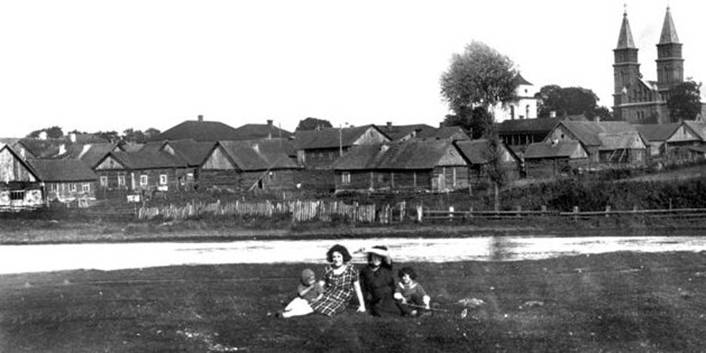
The Uzpaliai ‘shtetl’ in the 1920’s
“Shtetl” is the Yiddish word for small town, the type of community that many of our Eastern European ancestors lived in for centuries before either emigrating or being killed during the Holocaust. Under the aegis of JewishGen, Inc. and its ShtetLinks project (http://www.shtetlinks.jewishgen.org/), genealogists are able to memorialize the shtetl that their families came from. For me this is a wonderful way to honor not only my grandparents who grew up in these communities but also all those who came before them. It’s a way to remember the Jewish communities of Eastern Europe that no longer exist -- the people, the culture, and the institutions.
I maintain three Shtet Links sites for the Lithuanian towns of Kupiskis, Rokiskis, and Uzpaliai. My father’s parents were born in Kupiskis and Uzpaliai and many family members lived in Rokiskis. After a visit to these towns with my father, I decided that I wanted a more permanent way of honoring my family and all their neighbors and so I started my websites. But while I maintain them, the content is a result of a huge group effort. Photos and information were shared by survivors and descendants of people from these towns. I have tried to recreate the communities that existed in the past through family stories, family photos, and archival and historical records.
There are over 400 ShtetLinks sites that cover eastern and western Europe, as well as the rest of the globe. The creators are all volunteers who are doing this as a way to commemorate their family pasts. In essence, we are writing the history of our families and their communities.
- Bookmark :
- Digg
- del.icio.us
- Stumbleupon
- Redit it
(Lithuanian Jews)
Well, if you didn’t, please see what Monika Bončkutė, a journalist at Lithuania’s leading newspaper, Lietuvos Rytas, wrote last year:

Monika Bončkutė
What do Ben Bernanke, the head of the Federal Reserve leading the United States to economic recovery; one of the most-famous American singers of all time, Bob Dylan; the rocker Pink; British comedian Sacha Baron Cohen and French philosopher Emmanuel Levinas all have in common?
All these people have roots in Lithuania. As do hundreds of thousands, or perhaps even millions, of Jews around the world, whose parents were driven from our country by the Tsar’s restrictions, fellow Lithuanians withdrawn into a closed farming culture and the mass murder organized by the Nazis in World War II.
What would Lithuania look like now as we enter the second decade of the 21st century, if almost all Lithuanian Jews had not been exterminated during the last century, and instead of 50 years of the artificial “friendship of nations” promulgated by the Soviets, our parents and grandparents had lived as true citizens of the free world?
What would the map of Lithuanian politics, economics, art and pop culture look like if Jews today comprised seven percent of the Lithuanian population as they did before World War II? Maybe we would have had, finally, a Nobel Prize winner, world-renowned actors and actresses and highly capable businesspeople and politicians.
Who knows, Sacha Baron Cohen might have made “Borat” in Lithuania, and Binyamin Netanyahu would now be prime minister of Lithuania, and would now be preparing a plan for the improvement of our country’s economic situation and solving complicated relations with Russia instead of tackling the problem of peace between Israelis and Palestinians.
Last year we marked Lithuania’s millennium, this year we will celebrate twenty years since the re-establishment of Lithuanian Independence. So far we have spent in total around 60 million litas for the government to create Lithuania’s image [improve and propagate country’s image abroad], but the only thing we are really known for is probably that two Lithuanians have made it on the United Kingdom’s most wanted list.
Perhaps now that the first decade of the 21st century has passed, a decade of terrorism, war and economic crisis Time magazine recently said was “sent from hell,” it would be a good time to learn from the mistakes of history and to start to build Lithuania’s image and civil society upon foundations of tolerance and inclusiveness?
I bet money that a video clip presenting Lithuania as the land of the parents and grandparents of world famous artists, scientists and politicians would be much more successful than some guy named Jonas making clown faces and pushing boring facts about Lithuania in the form of a deck of cards on the screen, telling the world how well Mazeikiu Oil is doing.
Of course, it needs to be told to a society dripping with anti-Semitism and intolerance in general that the most famous people from Lithuania and those who have achieved the most in the world are Jews. Jews who call themselves Litvaks coming from the territories of the former Grand Duchy of Lithuania who immigrated to Western Europe and the US did not spend their time idly.
Jascha Heifetz, the wunderkind born in Vilnius, used to play for the picky audience in Kaunas when he was seven, until he entered the US and became one of the most famous violinists in the world, ever.
The Howard brothers, fathers of Vaudeville and comedy in America, known as “The Three Stooges” also have Lithuanian roots. As does American composer Philip Glass. This grandchild of Lithuanian Jews is one of the most famous composers of the end of the 20th century and works with some of the most famous artists in the world, including Canadian singer and descendant of Lithuanian Jews Leonard Cohen.
You could continue this list indefinitely, because in every country in the West, wherever there is a moderate-sized Jewish community, you will find those who say they come from Lithuania.
Ben Bernanke, whose grandfather registered as Jonas Bernanke at the Immigration Registration Center at Ellis Island in New York, was Time magazine’s man of the year last year. A Time editorial claimed that if not for the chairman of the Federal Reserve, there would be a much worse economic situation in America and the world right now.
Incidentally, this was probably the first time the Lithuanian origin of the US “finance czar” was mentioned in the press. Only in the issue of Time dedicated to Bernanke was it noted that the grandparents of the head of the Federal Reserve Bank survived pogroms in Lithuania.
Before the anti-Semites open their filthy mouths, I would like to remind them that practically every head of a Hollywood studio, many actors and actresses and Nobel Prize winners of all fields are of Jewish origin. But they speak English, and are understood first as Americans. Does America benefit from this? Undoubtedly.
Try to picture the film industry without Harrison Ford, Gwyneth Partlow, Sarah Jessica Parker or Zack Efron.
What if Americans had slaughtered Jews as the Nazis did in our country with the help of Lithuanians? It’s possible that the US would even now not have one of its most influential cultural icons, Hollywood.
As if it weren’t enough that the contribution of Lithuanian Jews and their descendants was not appropriately recognized when Independence was restored [1990-1991], recently anti-Semitism has only been gaining ground in Lithuania.
In 1991, 10% of respondents said they didn’t view Jews favourably, i.e., four times less than now. According to results of a survey conducted by the Pew Research centre, in 2009 some 37 percent of Lithuanian residents said they viewed Jews negatively.
Viewed from outside, this appears totally incomprehensible and unjustified. Currently just under 3,500 Jews live in Lithuania, so the possibility that the 3.5 million people living in the country, mainly “pure” Lithuanians, are personally acquainted with even one Jewish family is quite small.
Our forefathers looked askew at Jews because they were farmers shut in to their own world, while many Jews were merchants. For them, Jews were probably the most foreign group of people. But at least they met Jews at the store or when Jews came calling with their goods at their farms.
But now, self-respecting citizens of the independent Lithuanian state that belongs to international organizations, many of whom have never during their life even had a beer with a Jew, never mind any deeper acquaintance, feel themselves entitled to judge negatively the entire Jewish people.
And now for a bit of statistics: 92% of Americans believe that diversity is good for society. Only 51% of Lithuanians share this view. This is also one of the lowest indicators for the value of diversity in Europe.
Will we be able, in 2010, to draw the interest of the world as a country of pure-blooded, blue-blooded Lithuanians, not just for surrendering our most creative and intelligent members during occupations, wars or through stupidity, but also for the stubborn persistence of our fear of diversity?
The translated version of this article was found at the web site www.HolocaustInTheBaltics.com,
and extracted from the page "BOLD CITIZENS SPEAK" www.holocaustinthebaltics.com/132423.html
This page features several Lithuanian citizens who have spoken up for the country's Jewish minority.
- Bookmark :
- Digg
- del.icio.us
- Stumbleupon
- Redit it
VilNews e-magazine is published in Vilnius, Lithuania. Editor-in-Chief: Mr. Aage Myhre. Inquires to the editors: editor@VilNews.com.
Code of Ethics: See Section 2 – about VilNews. VilNews is not responsible for content on external links/web pages.
HOW TO ADVERTISE IN VILNEWS.
All content is copyrighted © 2011. UAB ‘VilNews’.

 Click on the buttons to open and read each of VilNews' 18 sub-sections
Click on the buttons to open and read each of VilNews' 18 sub-sections 

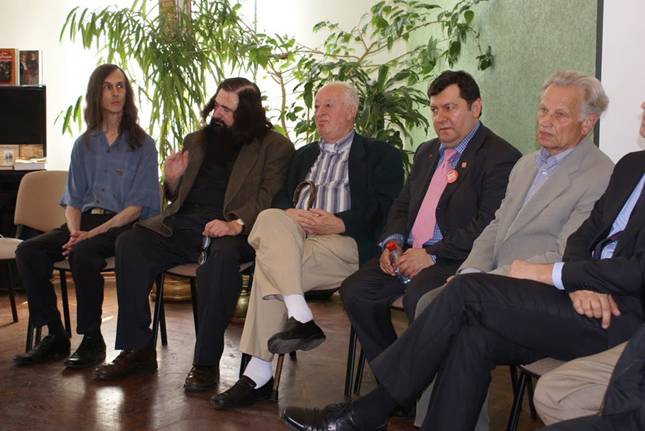









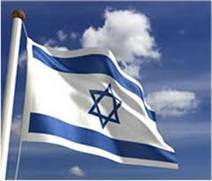

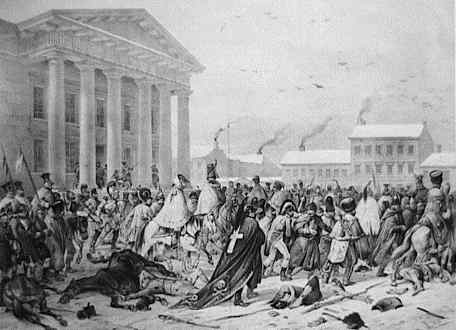

























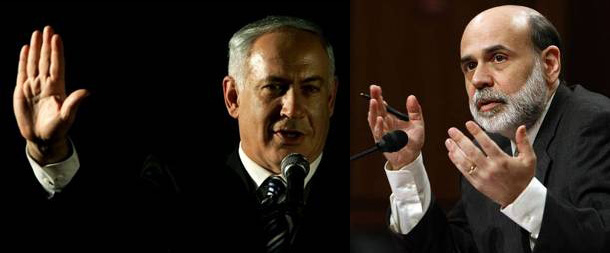

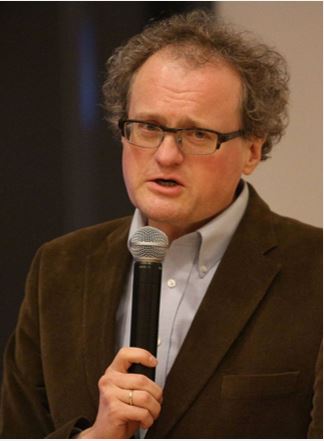
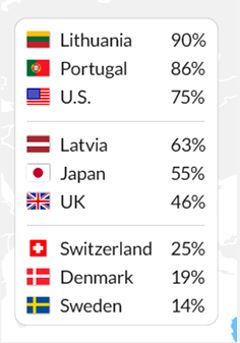
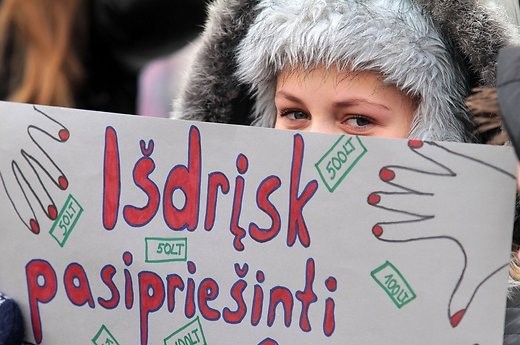
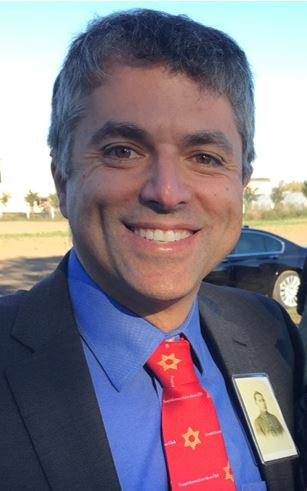

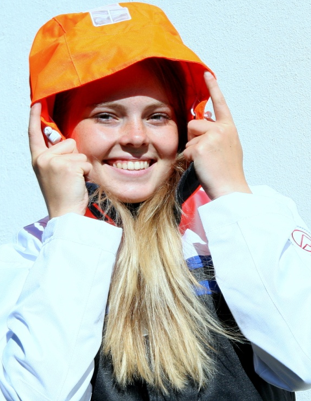
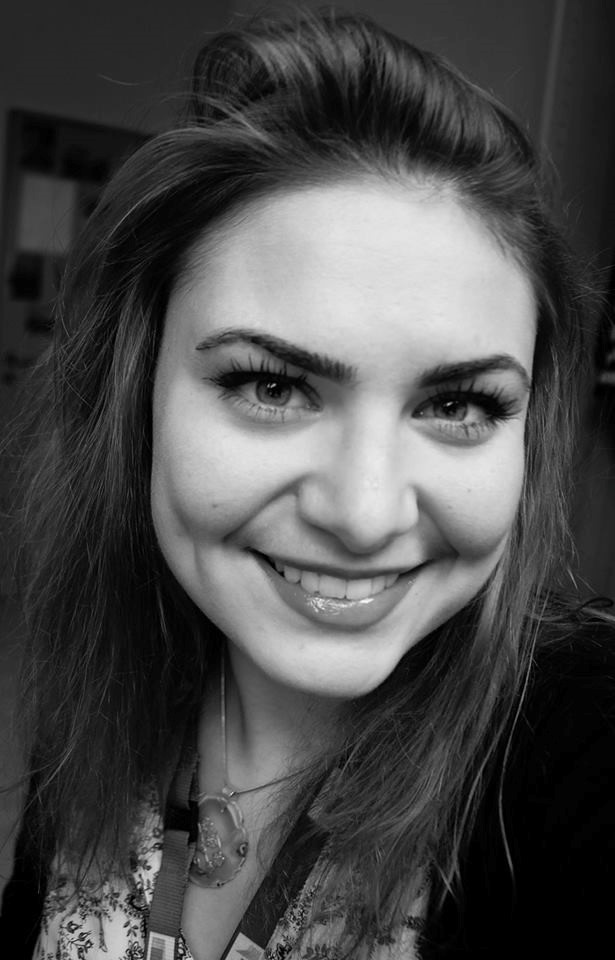
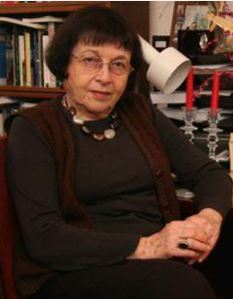
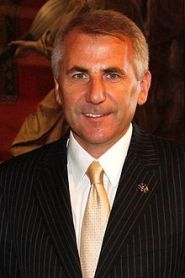
.jpg)
